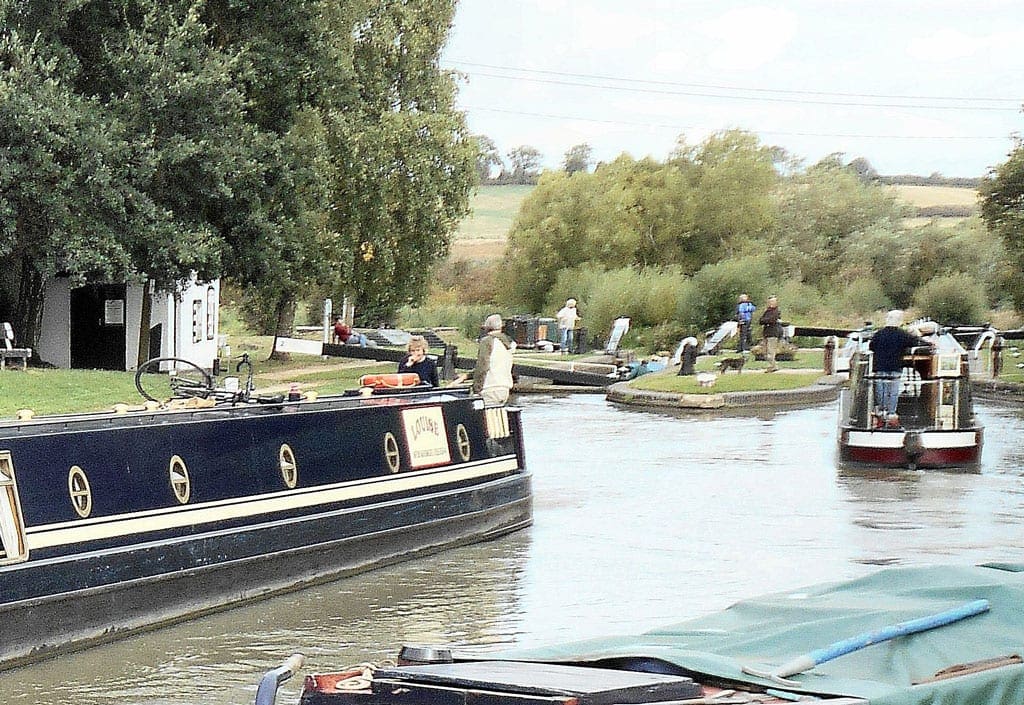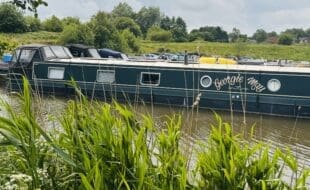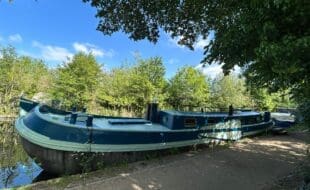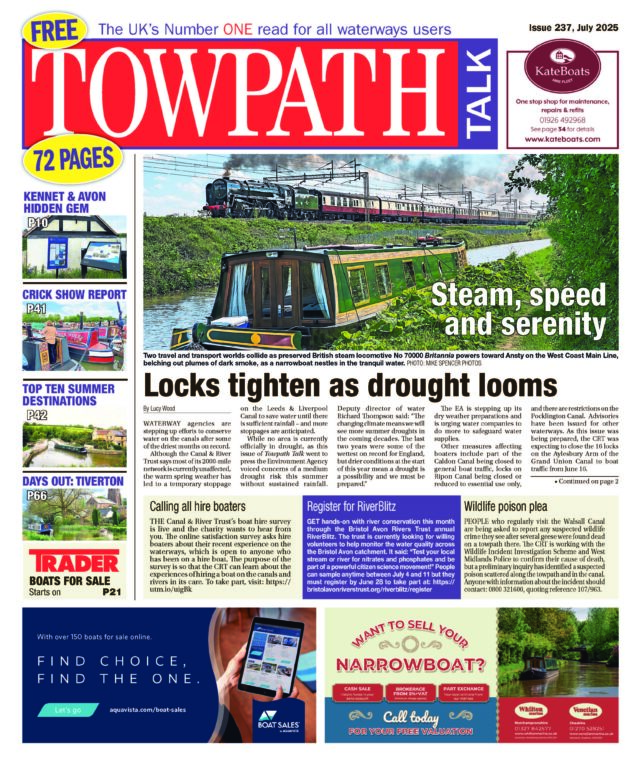
The Canal & River Trust has published its Annual Lockage Report for 2020 which shows how many times locks were used across the charity’s 2,000 miles of waterways.
As Covid-19 lockdown restrictions interrupted boaters usual cruising patterns for much of the year, the Report charts an unprecedented drop in use.
The Report compares 2020’s lock use with the previous year. It details a 32.9% reduction across 172 comparison sites.
The year saw distinct phases of use. In the week before the first lockdown in March, there were around 3,500 weekly lock counts: during lockdown this reduced to below 1,000.
Post-lockdown numbers bounced back and from early July numbers soared, as boaters were able to cruise freely and hire boat firms recorded heavy bookings, with many people choosing staycations.
Lockages stayed at over 12,000 lockages per week for most of the summer, with a peak of 13,700 lockages in mid-August.
Hillmorton Locks 2&3 (twinned locks) on the Oxford Canal, which saw 5,933 lockages, a drop of 29%, remained the busiest locks on the English and Welsh canal system. Cholmondeston on the Shropshire Union Canal was the second busiest, recording 5,346 locakges, also down 29% on the previous year.
Woodend on the Trent & Mersey (4,450) was in third, followed by Wardle on the Shropshire Union Canal (4,284) and New Marton on the Llangollen Canal (4,222): all recorded significant drops in use.

Volunteer lock keepers were still present at 105 sites to help boaters when Covid-19 restrictions allowed, recording 89,000 hours of lock keeping.
Adam Comerford, national hydrology manager at the Canal & River Trust, comments: “The reasons for variances in lock use year to year can be numerous and complex, but in 2020 the reason for such an unprecedented drop was clear: the Covid-19 pandemic. This was compounded by the fifth warmest and driest spring since 1910, which had knock-on effects for water supplies in the summer, when lockdown restrictions were loosened.
“It was heartening to see boaters, both owners and hirers, enjoying a summer of cruising. The waterways remain as popular as ever, and we hope that some of these new staycationers will return to the canals for future holidays.
“The monitoring of lock operations across our waterways remains an essential element in our water resources management as well as providing an insight into any changing patterns in use across the network. We are all looking forward to being able to cruise freely again, hopefully in the near future.”
‘Lockage’ can be defined simply as lock usage through the filling and emptying of a lock chamber, which in turn allows the movement of water and passage of boats.
It is important to distinguish lockage from boat movements, which are the actual number of boats which travel through a lock.
The Trust separates boat movements from lockage to acknowledge that averages can be skewed by the boat: lockage ratio (in the case of a typical broad lock, the ratio can be between one and four boats per lockful of water used).
The report, which is now in its 20th year, can be found on the Canal & River Trust website: https://canalrivertrust.org.uk/lockages





